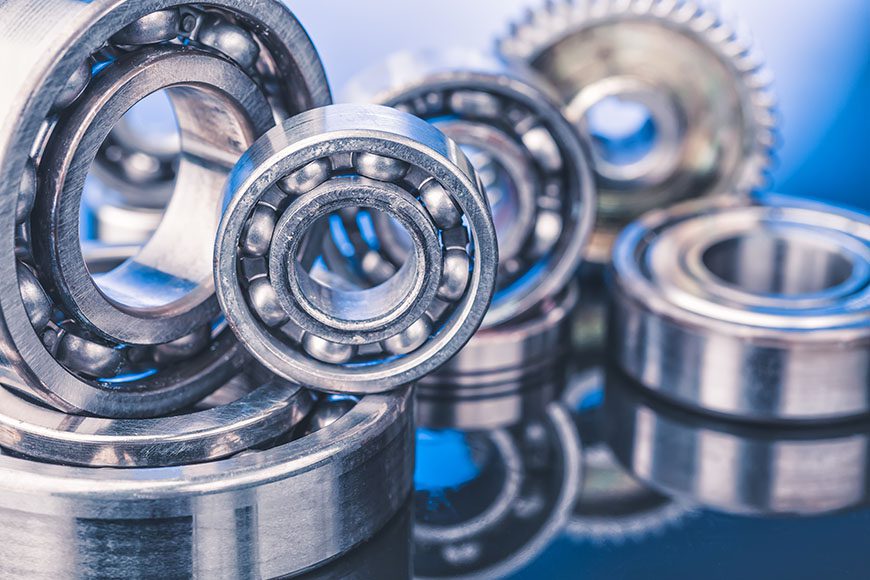As the world becomes increasingly technology-driven, many industrial applications are being replaced by more advanced and efficient machines. One of the key components of these machines is the sleeve bearing – a bearings that helps facilitate motion between two components, reduces friction and absorbs vibration. While sleeve bearings are an important part of industrial applications, there are a few things you need to know about them in order to make the most of their benefits. In this post, we’ll discuss the importance of sleeve bearings and shed some light on their different types, as well as their benefits in industrial applications. We’ll also provide some resources that will help you get started using sleeve bearings in your own projects! So be sure to read on for all the info you need on this important bearing type!
Why is sleeve bearing important for industrial applications?
Industrial applications are crucial for many businesses because they offer a range of benefits that are not found in other applications. These benefits include reduced wear on your machine equipment over time, improved smoothness and reduced friction. Additionally, sleeve bearings are reliable and offer a high level of quality. Because of these features, sleeve bearings are an essential part of industrial applications and are a must-have for any business.
How is a sleeve bearing different from a bushing?
Sleeve bearings are an important type of ball bearing that is used in industrial applications to reduce friction and improve efficiency. They are different from bushing bearings in a few key ways: sleeve bearings are a type of ball bearing that is used in machinery to reduce friction; sleeve bearings are a type of ball bearing that is used in machinery to reduce friction and improve efficiency; and sleeve bearings are a type of ball bearing that is used in machinery to reduce friction, improve efficiency, and improve performance.
What are the benefits of using sleeve bearings in applications?
Sleeve bearings are a type of bearing that is inserted into the shaft of a machine or component, and it allows for motion in two directions – axial (vertical) and rotational. They’re often used in industrial applications because they offer several benefits over traditional ball bearings, including higher speeds and reduced noise levels. Additionally, sleeve bearings are often used in medical devices because they have a longer life span than other types of bearings. So, if you’re looking for a bearing that will help reduce wear and tear on components, increase speeds, and have a longer life span, sleeve bearings are the perfect option!
What is a sleeve bearing?
Gear wheels and motors rely on sleeve bearings for durability and performance. What is a sleeve bearing and why is it so important? Sleeve bearings are a type of bearing that is located inside the sleeve of a gear wheel or motor shaft. This helps to minimize stress on the outer surface of the wheel or shaft, and ensures long-term durability and performance. Replacing worn or damaged sleeves can be a cost-effective way to improve gearwheel life and function in your machinery. So, next time you’re in need of a bearing for your machine, make sure to check out sleeve bearings!
Resources
Sleeve bearings are important for industrial applications because they allow a shaft to turn smoothly and freely. This can protect the equipment it’s attached to from damage. If sleeve bearings aren’t lubricated and maintained, damage can occur over time. To ensure proper lubrication and longevity of sleeve bearings, be sure to use an appropriate bearing lubricant and regularly inspect them for wear and tear. There are many types of sleeve bearings, so it can be difficult to determine which ones are best for your application. In cases like this, it’s a good idea to consult with a bearing specialist to get the right bearings for your application.
FAQs about sleeve bearings
Sleeve bearings are internal components used in rotating machinery, such as turbines and pumps. If they fail, they can cause serious damage to the machinery they’re installed on. It’s important to understand the benefits of sleeve bearings and how to keep them well-maintained in order to avoid trouble down the road. Failure can be due to a variety of reasons, including temperature extremes and over-loading. Make sure to ask questions about your specific application and inquire about any sleeve bearing-related issues your machine may experience. By doing so, you can ensure a long and trouble-free relationship with your machine!
Conclusion
Sleeve bearings are a common type of bearing that is used in industrial applications. They are different from bushings in a few key ways, and as a result, have a number of benefits that make them a popular choice for these applications. By understanding the different benefits of sleeve bearings, you can make an informed decision about whether or not they are the right bearing for your application. In addition, we have provided a list of resources and FAQs to help you get started. Thank you for reading!
That was it for this article. If you found it helpful, consider checking out our blog Techhubinfo.com












Discussion about this post